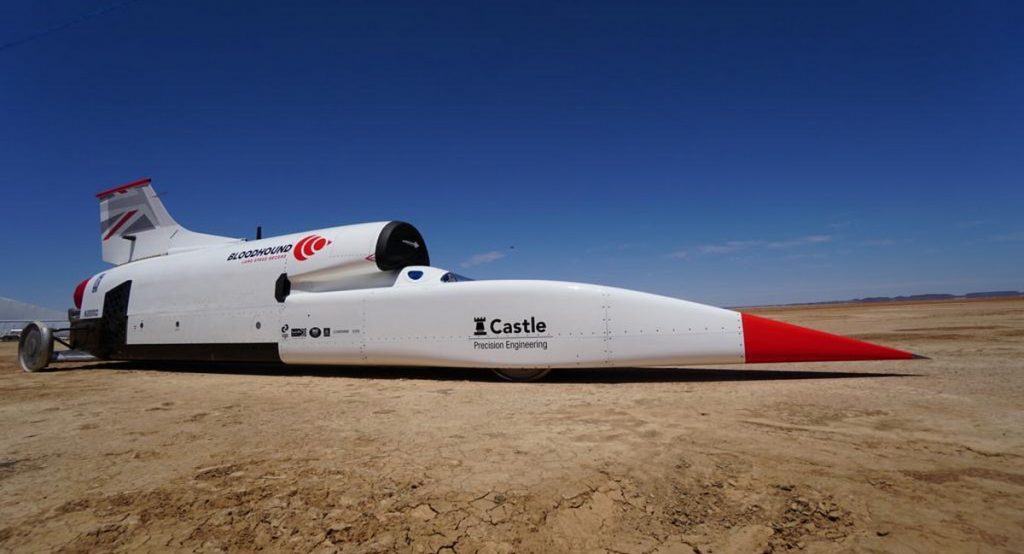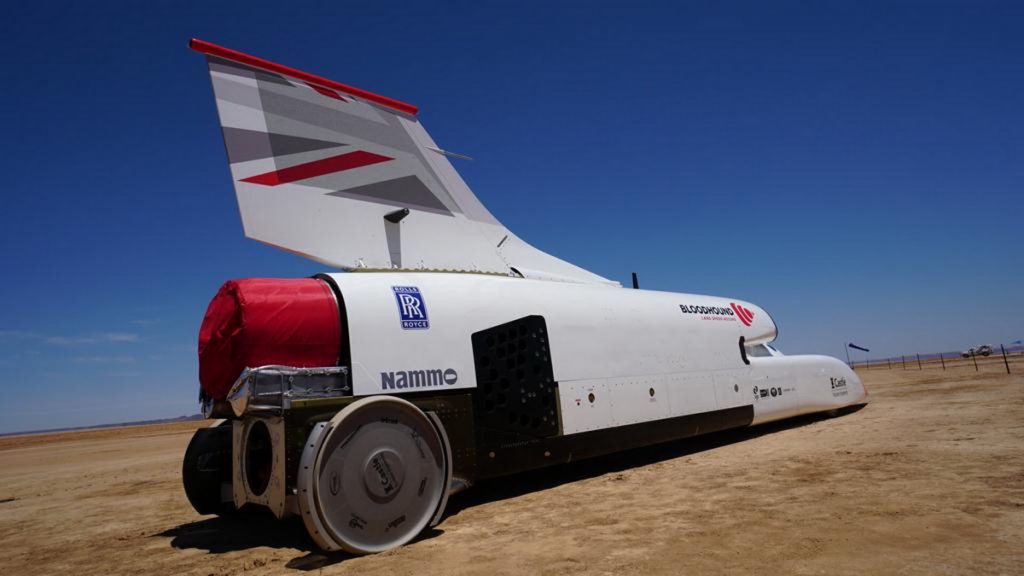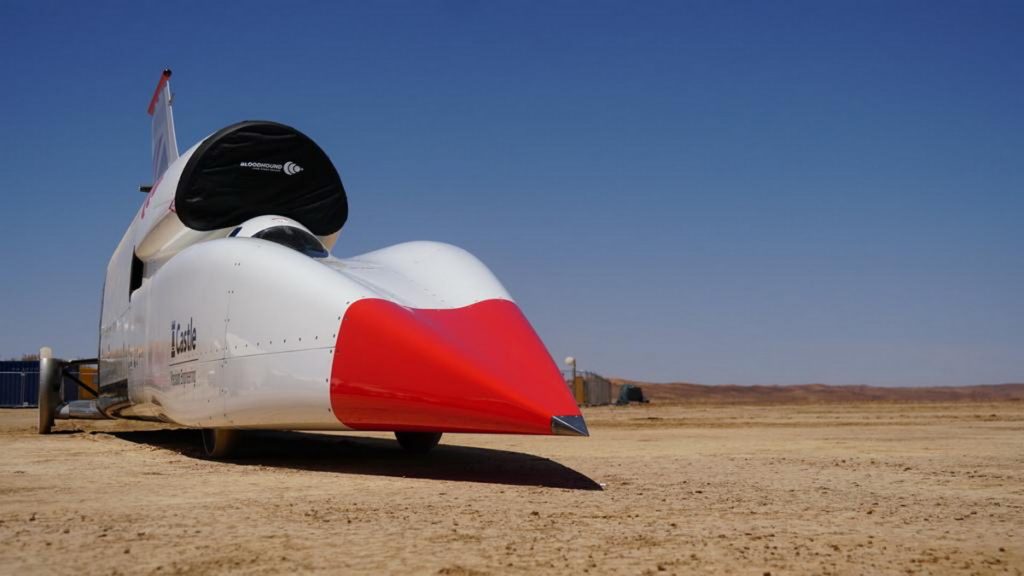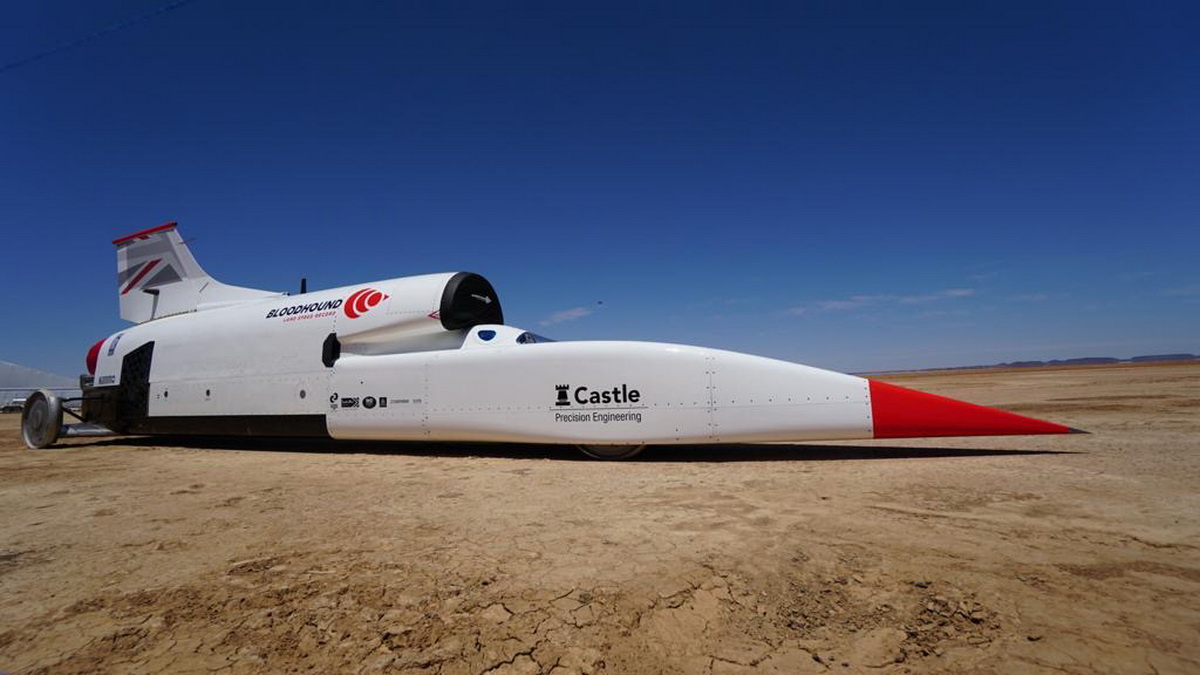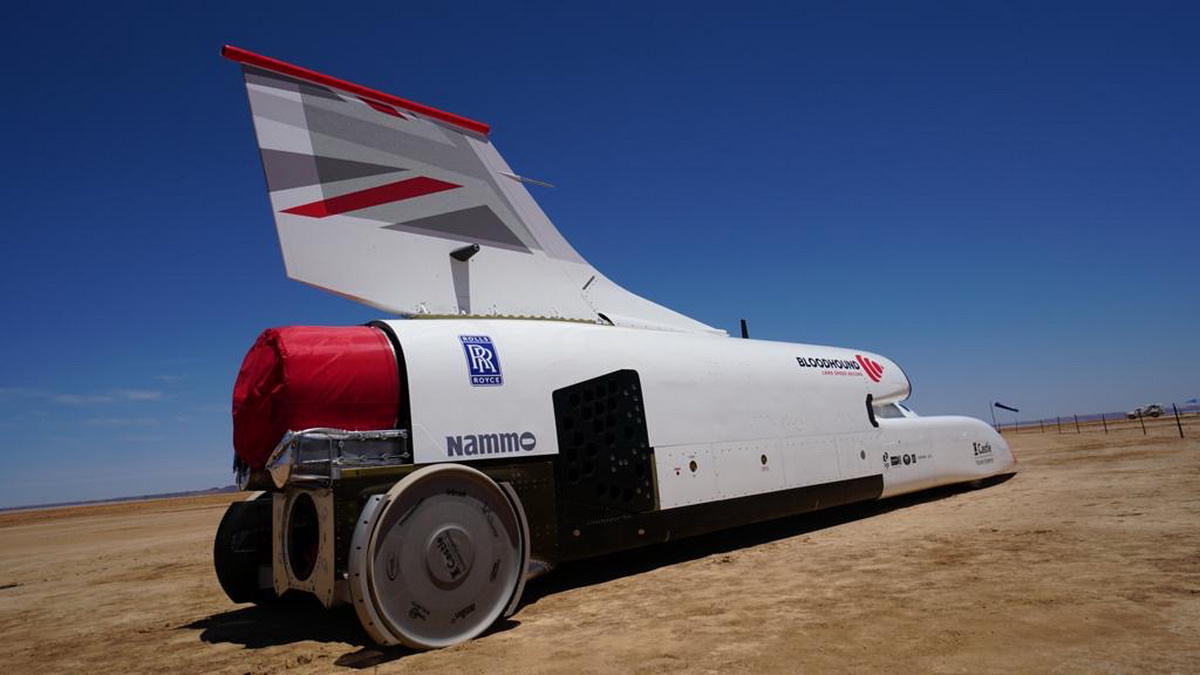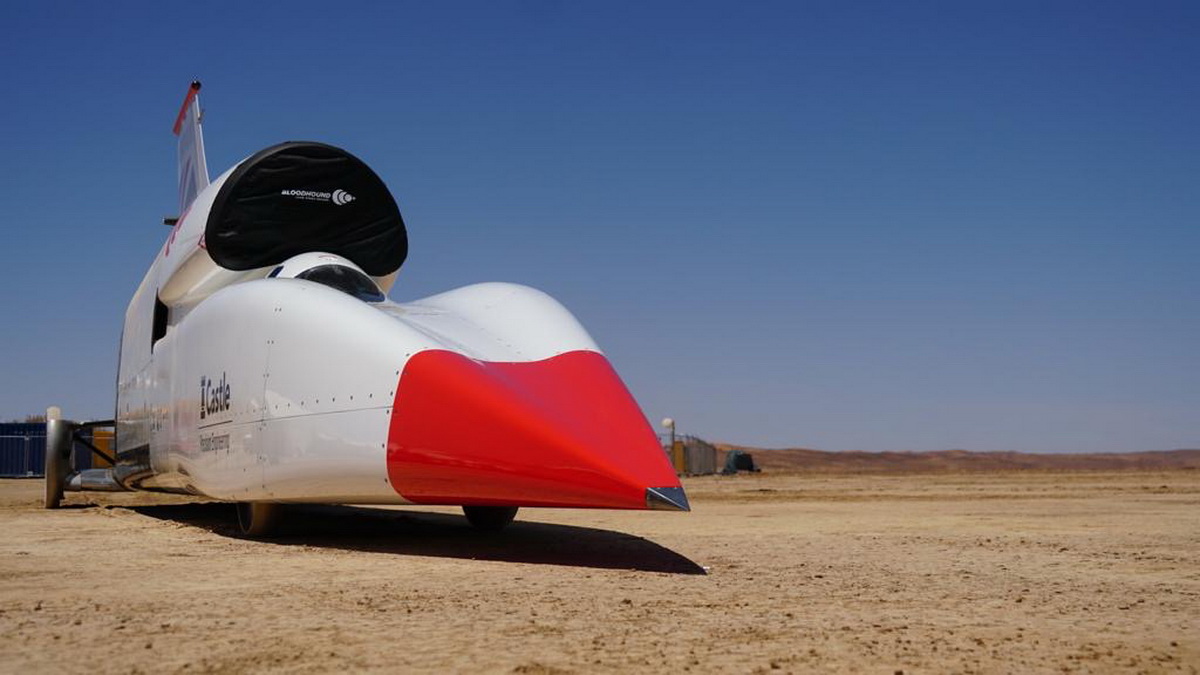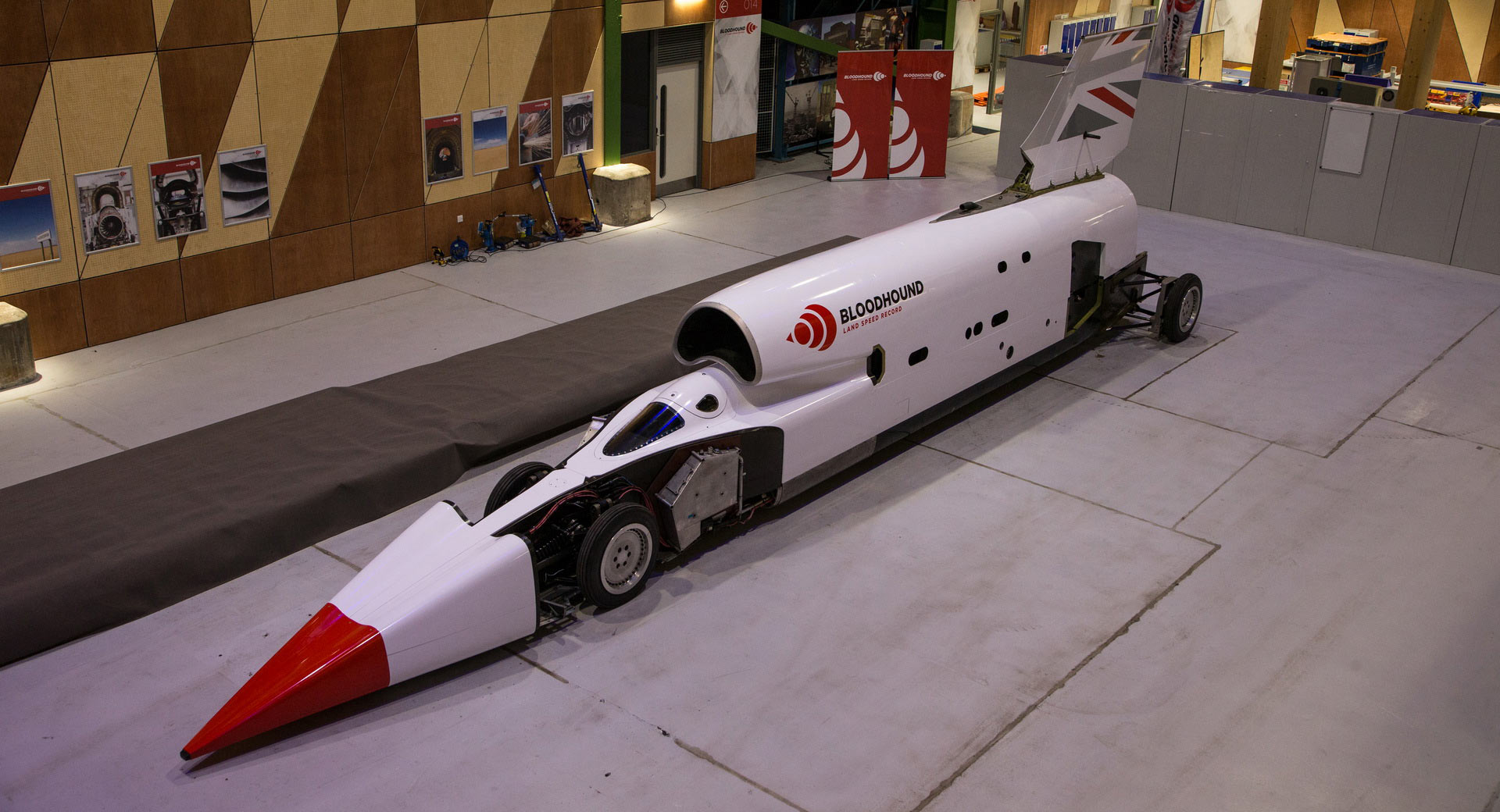The Bloodhound LSR has arrived in South Africa to begin its high-speed testing programme ahead of a next year’s world land speed record attempt.
It’s also the first appearance of the car with its precision-machined solid aluminum wheels that were made to withstand the stress of supersonic speeds. For this first session, Bloodhound will test the wheels at speeds of up to 500 mph (800 km/h).
The Bloodhound LSR car will be driven at the Hakskeenpan desert racetrack for the very first time, using an EJ200 Eurofighter Typhoon jet engine. The key objectives during these first runs include evaluating how the car behaves when slowing down and stopping from a number of target speeds.
Also Read: Bloodhound LSR To Make 13 Test Runs And Hit 500 MPH (804km/h) In South Africa
Once the engineers and former RAF jet pilot and current record holder Andy Green are satisfied with the car’s behavior, they will start pushing to greater speeds, at increments of 50 mph (80 km/h). The team will gather data from 192 pressure sensors on the car to compare it against the predicted CFD models in order to ensure that everything goes as planned.
Bloodhound’s engineers will be working together with Assistant Professor Ben Evans and Jack Townsend, from Swansea University, to find out the amount of drag experienced by the car in order to determine the size of the rocket that will be fitted to it for the final record attempt.
The Hakskeenpan desert was cleared from 16,500 tonnes of rock over 22 million square meters of dry lake bed, making it the largest area of land ever cleared by hand for a motorsport event.
“Newquay was all about getting up to speed and finding out how quickly we could get the engine to full power and accelerate using max reheat. Andy was on the throttle for two seconds to reach 200 mph (322 km/h) in eight seconds,” said Mark Chapman, Bloodhound LSR Engineering Director. “Here at the Hakskeenpan on a 10-mile (16-km) track we can accelerate for much longer, achieve higher speeds and investigate the car’s stability, performance and drag, all crucial as we move towards setting a new world land speed record.”
The Bloodhound LSR is estimated that it will attempt a new world land speed record as early as late 2020, with the team also aiming to break the 1,000 mph barrier on land. Whether these two will happen at the same time remains to be seen.




